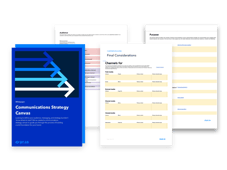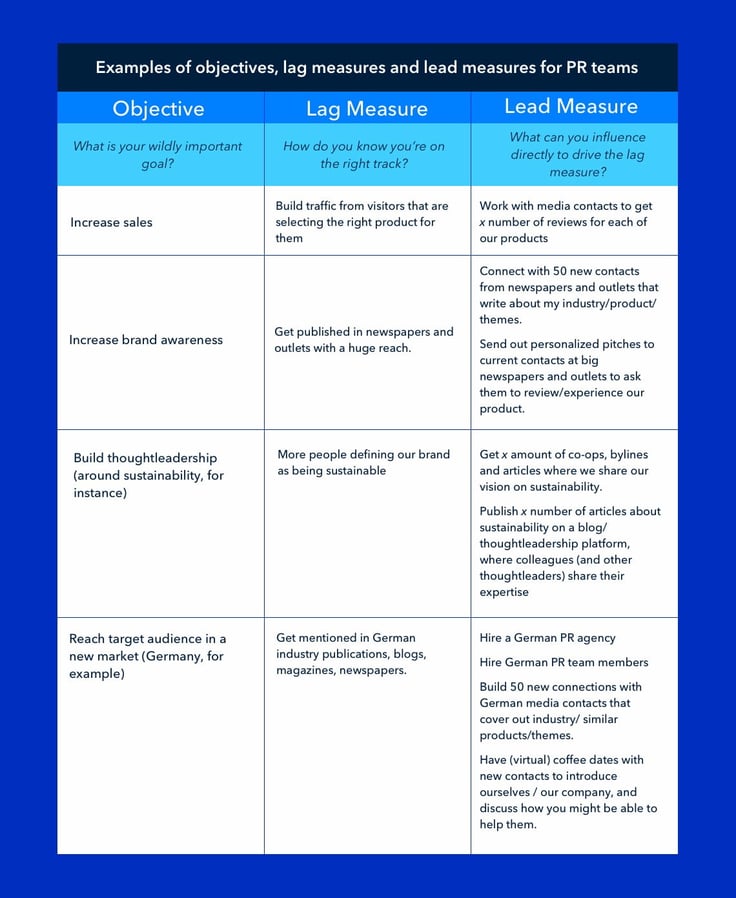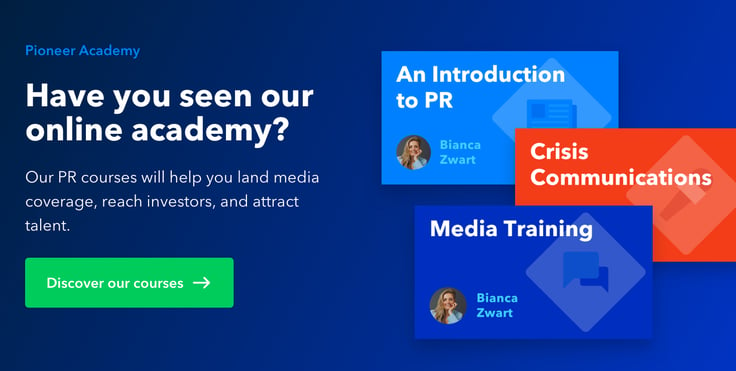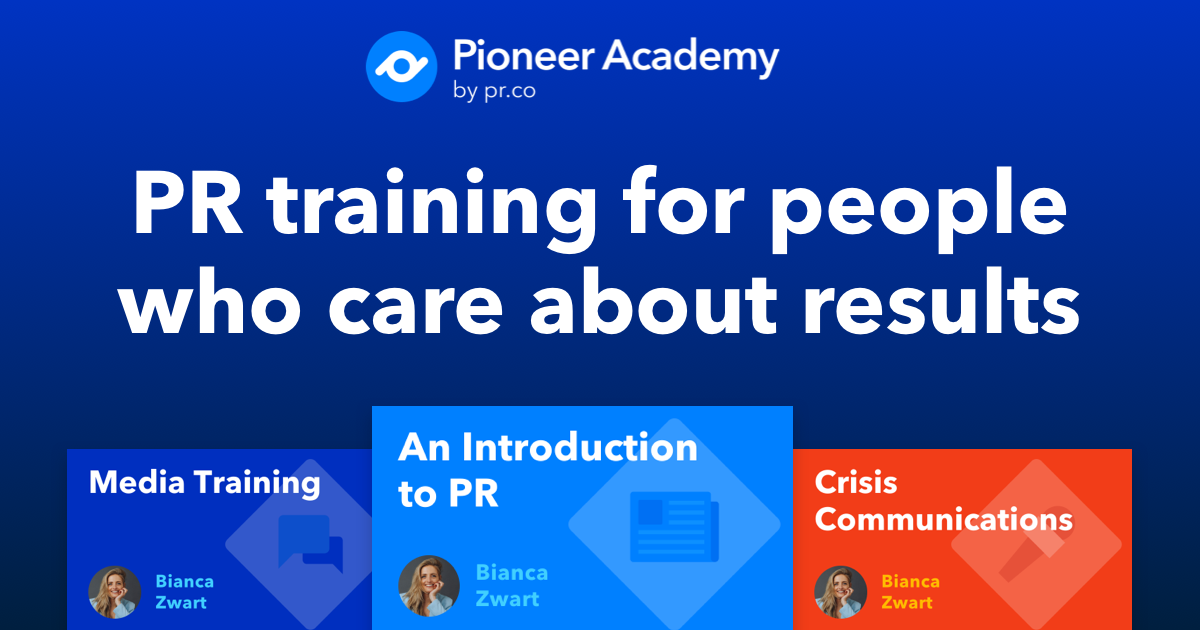It’s easy to lose your way searching for that authentic, distinctive voice that will set your brand apart. You might stretch your messaging to adapt to the current news cycle, or devote yourself to a new social cause. In time, you might even look at your brand and not recognize it: it seems so far from what it once was.
If this sounds like you, you may need to build upon (or revise) your communication strategy. Whilst we don’t claim to have the magic recipe— as there is no one-size-fits-all approach to communication- we can help you start from a strong position.
Below, we’ll walk you through five essential steps to building your communications strategy:
- (Re)discover your purpose
- Decide on your audience
- Define themes and messages
- Map out your channels
- Outline your strategy

Download the Canvas
Want to save this for later?
We use your contact information only to contact you about our products and services.
We never pass your information on to third parties. You can easily unsubscribe anytime.
5 Key Steps to Build your Communications Strategy
1. (Re)discover your purpose
The world is a loud place, and most of it is noise. As a communications professional it’s your job to create signal: to resonate with people.
An important rule to resonate with your audience is to be real. Brands that don’t stick to their values, or simply don’t seem to have a deeper purpose than making money, are punished with oblivion. Brands with a clear purpose, on the other hand, thrive. Take brands like Ben & Jerry's and Tony's Chocolonely that show their commitment to social or environmental causes through concrete action. Edelman Trust Barometer 2023 report reveals that sustainably-marketed products are growing twice as fast as their traditional alternatives. With more consumers
Our job as communications specialists is to create signal, and that starts with rediscovering your brand's purpose.
So before you get carried away with catchy puns for your Instagram captions, it's important to take a step back and define your brand's core. Begin by doing a quick exercise with your team — shoot them an email with these questions:
- What is our company's purpose? Describe it in 3 words.
- What are our target audience's most important beliefs/values?
- What are the 3 main themes we're communicating as a company?
As a team, it’s important to establish the same founding values that you want your brand to carry. A sit-down doesn’t have to happen all in the same room by the way. With most teams working partially or completely remote these days, check out MindMeister or Miro to brainstorm and visualize your ideas.
Gather your team and answer these questions:
- Why do we do this?
- Who do we do this for?
- What do we believe in?
- What is the Big Hairy Audacious Goal we are working towards?
- Who are our thought leaders?
- What are the three key selling points of our product or service? What makes us different?
- What is our story and what does that mean to us (and our customers)?
Once you've collectively decided on what matters most to your brand and what you want to achieve, the next step is all about knowing who you'll be speaking to.
2. Decide on your audience
We tend to spend so much time tweaking our copy that we lose touch with reality. When so many of our channels are indirect or digital, it’s easy to forget who we are speaking to. Who are the people between the anonymous numbers on Google Analytics? Remember, your audience is human and wants authenticity.
Listening to your audience is one of the most important steps in your strategy. It directs your communication and helps you decide where to act.
Who is my audience?
Marketers and PR pros alike find it difficult to pinpoint their brand’s audience. Should messages be crafted for a specific persona or am I speaking to five different audiences? Diogo Pinheiro, former Global Communications Manager at Heineken, makes a strong case of differentiating your aspirational audience and your volume target. Your aspirational target is the type of consumer that embodies everything you stand for. Although it may be a very niche target, they are the ones who share the same core values as your brand. Diogo argues that this small group of people may not be enough to sustain your brand and drive business. Therefore, it is important to identify your volume target, which is your potential buyers.
When deciding which audience to communicate to, go for your aspirational target. They might not be the ones bringing in big bucks, but speaking to them will attract your volume target as it is the type of person they aspire to be. Communicate to your aspirational customer and the rest, namely your volume target, will follow.
Understanding your audience
Once you’ve defined your audience, you’ll need to start exploring that audience. What do they find relevant? What do they care about right now? A way to answer these sometimes complex questions is to dig deep into your audience’s mind. Allow us to suggest our favorite tools to help you in the process:
- Ahrefs: A good way into your audience’s mind is to track what they search for. Ahrefs is a tool that allows you to monitor how a keyword is being searched, view similar phrases, anticipate potential traffic to your page, and much, much more.
- Q&A platforms like Quora and Reddit are bound to give you insight into your reader’s mind. When you find out what people already know, you can add to that with your content.
- Last, but certainly not least: Steve Blank, entrepreneur and startup guru, once said “There are no facts inside your building, so get outside.” While this is advice meant for product development, it also goes for developing your communications strategy. Nothing, not even the most cutting-edge technology to aid you in your research, compares to sitting down with your audience. Observe them, engage in conversation, and study their behavior. You might be surprised by what you find.
Building personas
Once you’ve done the research, the next step is mapping out what your audience looks like. You can start by asking yourself:
- Who are they? Focus on demographics. How old are they? Where do they live? What degree of education did they receive? How do they speak? How do they dress? The more realistic you make these personas, the easier it will be to visualise them when creating a strategy.
- What motivates them? What is it that shakes them to the core? What do they believe in? What is their biggest motivation?
- Consumption habits: When or where do they receive your messages? In which context do they consume your products?
If your aspirational audience is rather young, you’ll need to figure out the next big thing in social media. That used to be Facebook, then Instagram, then Tiktok, and by now, that's probably already passé.
We recently sat down with the 21-year-old CEO (yes, you read that correctly) of the media agency GoSpooky to understand how the landscape is shifting for Gen Z.
3. Define themes
Now that you’ve figured out your ‘why’ and your ‘who’, the next step is to define your what. What do you, as a brand, want to share with the world? In this step, you will choose the themes you want to push to make your brand stand out from the rest. Start by analyzing the overall value you are providing your clients.
Themes are different to purpose, which we have covered above. The former is the reason behind your story, and the latter are the messages inside it. In other words, the theme is your purpose in action.
If your purpose is insatiable curiosity, like Virgin, or radical transparency like Everlane and Buffer, how will you let the world know? Put some action into your purpose by crafting themes into your communication.
▲ Everlane is an American clothing retailer committed to making their processes and pricing transparent to their customers.
Your strategy should be the driving force behind your brand messaging. This way, you can tie your communication efforts together to achieve your goals. To create resonating content, keep your themes under three ideas that sum up what you want your audience to remember you by.
It’s not just what you say; it’s how you say it
Now more than ever, audiences want to connect emotionally to the content they interact with. The task of finding the right words to make your content click can be tricky. Nailing how you say something is equally, if not more, important than deciding what you say. Studies show an average person’s attention span has dropped to eight seconds. Point is, you don't have much time to express yourself, so using the right language helps.
Be strategic. Take your previously defined personas into consideration. How do they speak to each other? Are you keeping up with their slang? Are memes welcome? We gathered some guides and tools that might help you nail your tone of voice:
- Inspiration - We interviewed the editor of Big Spam, the newsletter that once used the word “anus” in their subject line and got a lot of people talking. Get inspired by their irreverent tone of voice.
- Guide - What’s the difference between tone and voice? Read Mailchimp’s Content Style Guide.
Here's our pick of 30 online tools that will help you hone your writing skills.
4. Map out your channels
PESO Model
As a PR pro, you’ve probably memorized the PESO model by heart. This Venn-Diagram, created by Spin Sucks founder Gini Dietrich, allows communications specialists to take advantage of and integrate different media channels under one holistic strategy.
The PESO model identifies four channels:
- Paid media: Channels that require money to distribute your content or ads. That means social media ads and paid media partnerships, not necessarily big billboards or multi-million dollar Super Bowl ads.
Investing in acquisition on social media, for example, is a great strategy. But beware! All that glitters is not gold. Spending money on social media ads and seeing thousands of visitors on your page can be vanity metrics that get you to invest again. If these visitors don’t spend significant time on your page, it was unqualified traffic to begin with. This probably means that you might be targeting the wrong people.
- Earned media: Channels that require relationships with (media) contacts who have established an audience. For instance: media relations, investor relations, and word-of-mouth.
- Shared Media: Amplifying content through an audience you’ve built. For instance, organic social media, review platforms, and forums.
Leveraging the power of social media channels is a great way of growing your audience exponentially. One creative way of growth hacking is to immerse yourself in conversation. For example, say you have the world’s greatest headphones to offer. Instead of simply searching “headphones” on Twitter, you should add the word “need” before it. That way your results will show potential customers that might love your product. All you need is a witty reply or a discount code to transform these conversations into potential leads.
- Owned media: Inbound channels which your company completely owns, and where an audience finds your content. For instance: your newsroom, content marketing, thought-leadership platform, podcasts, or brand journalism. Be wary of websites that offer spaces for your content, such as Medium or LinkedIn Pulse. If these channels go away, you will lose that content forever.
By strategically combining each type of media the PESO model has to offer, you will leverage individual advantages and strengthen your media relations strategy.
We gathered everything we've learned after countless interviews with top PR pros in the game into a Media Relations Guide. Save it, download it, print it, share it.
5. Outline your strategy
Now it’s finally time to tie everything together to answer your “how”. Your strategy outline is the place where everything you’ve planned comes together in one, colorful spreadsheet. With your Big Hairy Audacious Goal at top to remind you of where you want to go; visualizing your specific goals, channels, and messages will allow you to get you there.
To make your communication strategy come to life, don’t forget to add a time frame for each action, the person responsible for it, and how you will measure its success. Some great tools our team uses to get the job done are Trello and Notion.
You can’t improve what you don’t measure
We know that’s the - sometimes terrifying - phrase that pops into our head every time we hear PR metrics. It’s easy to lose track of what’s important in PR by measuring ROI or other KPIs. So how do you measure performance and your team’s efforts all while keeping your CEO and investors happy?
Here’s an excerpt from our media relations guide that will ease your troubles:
Lag measures track the success of your objective, or your most important goal. You cannot influence lags directly. Lags are measures you spend time losing sleep over. They are things like revenue, profit, brand awareness, and customer satisfaction. They are called lag measures, because by the time you see them increase or decrease, that what drove the change is already passed. You can’t do anything to fix them, they are history.
Lead measures track the critical activities that drive (or lead) to the lag measure. They predict the success of the lag measure. The big difference with lag measures is that lead measures are directly influenced by your team: they are things like new contacts, news announcements sent out, completed campaigns. It’s very important to focus on lead measures you can directly influence. Lag measures are often easier to measure, and they represent the result we ultimately want, but without executing on lead measures they will bear nothing but frustration.
TLDR; lead measures are the buttons you can turn to make a difference, lag measures show if you turned the right buttons. Find the right buttons, and focus on those.
To help you get on the right track, here are some examples of objectives and their corresponding lead measures and lag measures.

A roadmap for success
Sitting out to map out a strategy might seem time-consuming and counterintuitive to brands that have been around for a while, but reconnecting to your roots and creating a new roadmap is always a trip worth taking.
Once you have a solid base that reflects who you are and where you want to go, your communications strategy will get you there. Coordinating actions and messages will not only save you time and money but also energy and effort. Your results will show that having a brand that is true to its cause really pays off.
Ready to share your powerful communication strategy with the world? A newsroom is one of the most efficient ways to get your news out there. When it comes to online newsrooms, we know a thing or two about them. It's why we're trusted by socially conscious brands WeTransfer, Dopper, Shimano, and Dolby. Here's how we can help you.
Ana is a marketer at pr.co, and is the driving force behind our 100+ articles and guides. Ana has an MSc in Corporate Communications, and four years of experience in the PR industry. Now, Ana distills knowledge from pr.co’s 250+ customers to help PR professionals get better results through high-quality content.. Connect on LinkedIn or send an email





